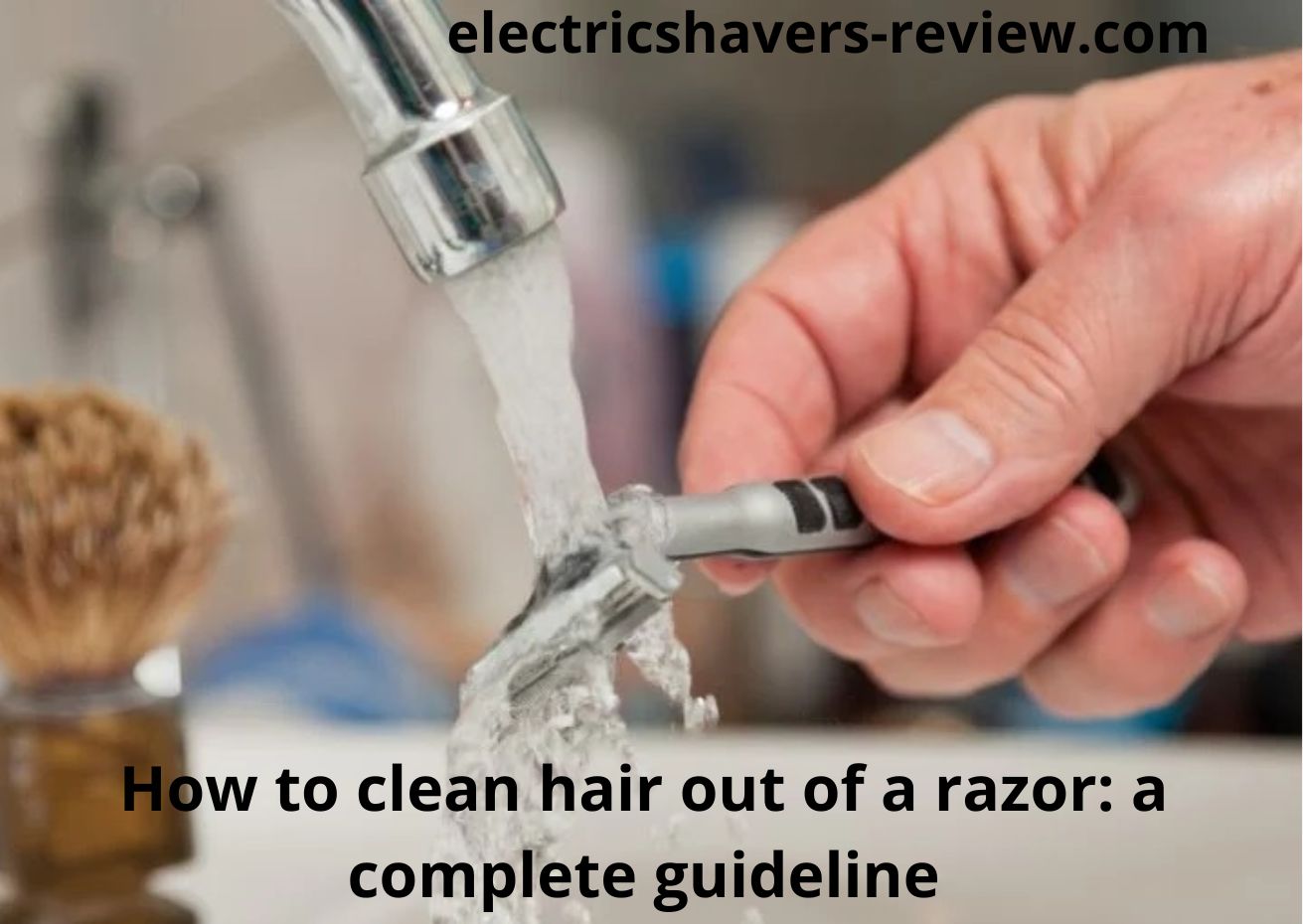How to clean hair out of a razor? For many people, shaving is a daily or weekly ritual. However, when your razor blade is blocked with hair, shaving may become a stressful process that’s why you should know how to clean hair out of a blade. This can not only reduce the effectiveness of razors but also result in the accumulation of bacteria and debris, which can irritate skin or infect it.
Maintaining a hygienic and clean razor experience requires learning how to remove hair from a blade.
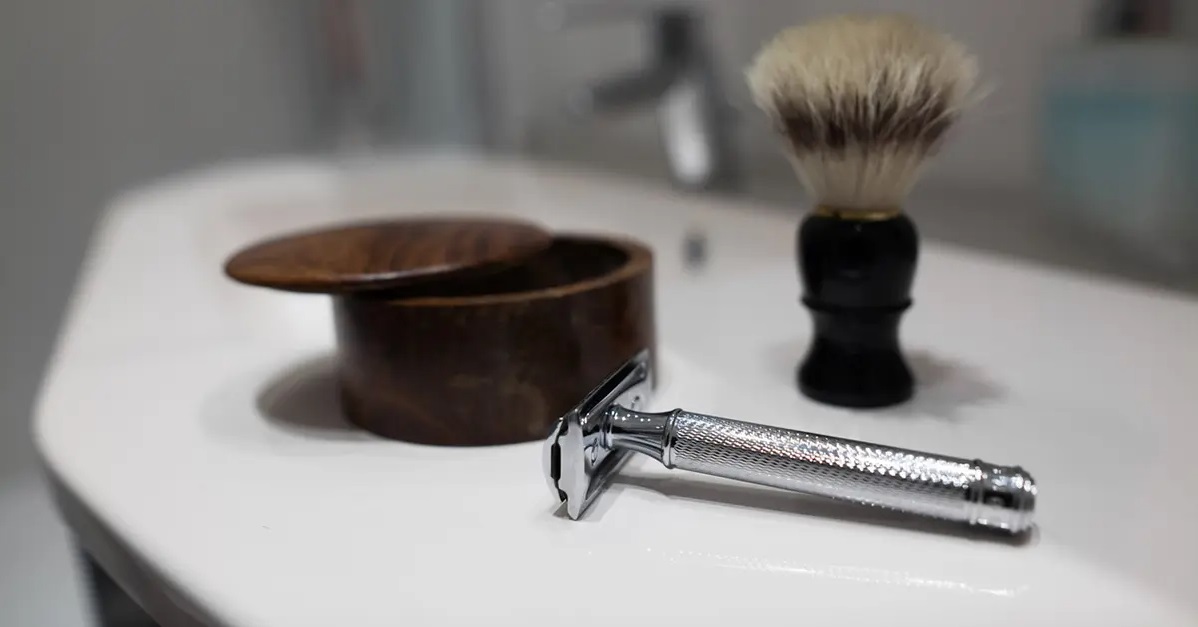
In this article, we’ll go over the causes of hair getting trapped in razors, the significance of cleaning and sanitizing your blade, and the measures you can take to remove hair and debris from your razor in an efficient manner.
Things to consider before cleaning razor out of hair
There are a few things to think about before cleaning a hair-stuck razor blade to make sure you do it safely and correctly. Here are some essential considerations:
Razor type
Various razor types call for various cleaning procedures, thus it’s critical to understand what kind of razor you have, electric razor, or disposable razor, and how to properly disassemble and clean it.

To find out how to clean your particular type of razor like a disposable razor, check the manufacturer’s instructions or do some online research.
Razor Safety
Disposable razor blades are sharp tools that can cause injuries if handled improperly, therefore safety should always come first while cleaning one. Use caution when disassembling the sharp razor, cleaning the blades with a brush, and handling the razor to prevent cuts or nicks.
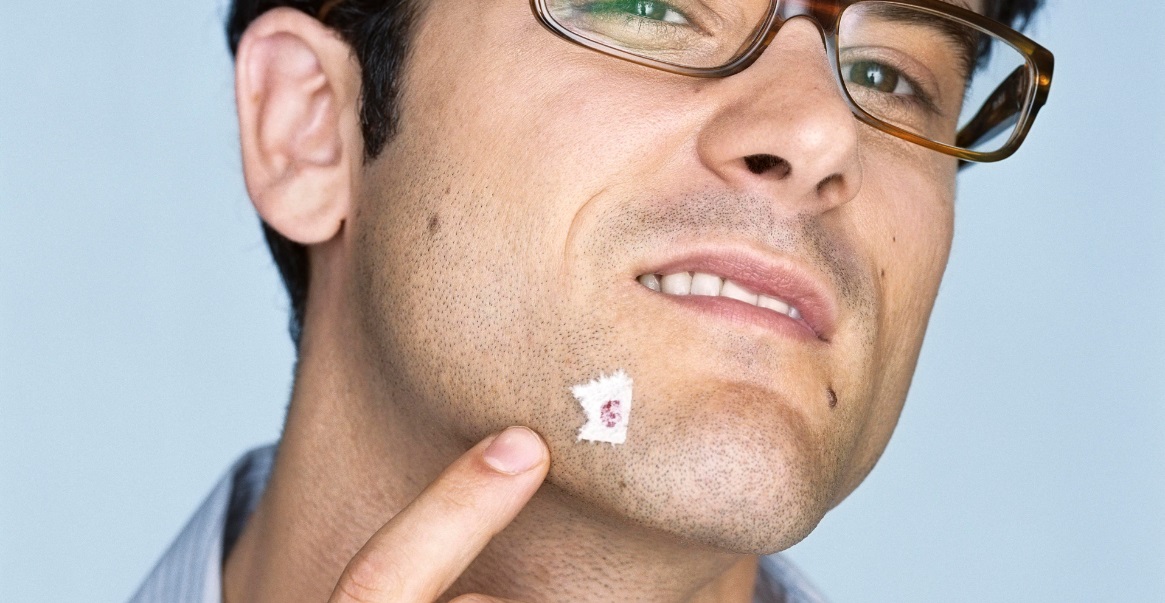
Razor condition
Hair can become lodged in the blade with a shaving foam buildup due to dull or worn razor blades that make it harder to cut through hair. Before cleaning the entire shaving razor by using a razor brush, examine the blades for damage or dullness and replace them as necessary.
Disinfection
Cleaning and disinfecting the entire shaving razor after use with a special razor brush can help get rid of hair and other debris, but it’s also crucial to get rid of any germs or other microbes that might be present.
To disinfect the razor before cleaning it, think about soaking it in rubbing alcohol or hydrogen peroxide.

Shaving technique
It’s crucial to practice good shaving techniques because it can affect how much hair is caught in your razor.
To reduce hair accumulation and avoid clogging, shave in the direction of hair development, rinse the razor periodically, and avoid pressing too firmly.
You can maintain a clean and hygienic shaving experience while safely and properly cleaning your dirty razor regularly by taking into account these elements.
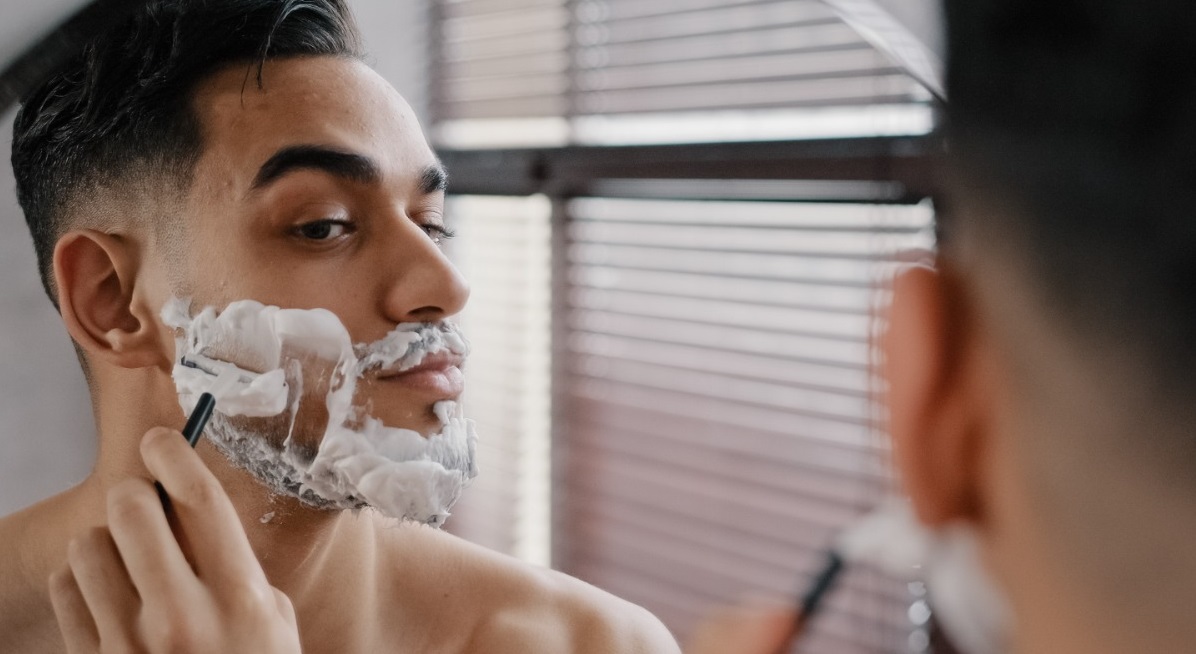
How often should I clean my razor?
Cleaning your razor after each use will help to keep hair, dead skin cells, and other debris from accumulating and blocking the razor blades. This will lessen the chance of nicks, cuts, and razor burn while also keeping your razor functional and sharp.
Here are some pointers on how frequently your razor has to be cleaned:
- After each usage, wash the razor under warm water and brush out any hair or debris that may have gotten lodged in the blades with a soft-bristled brush. This will keep the razor sterilized, clean and sharp and help prevent clogs.
- Disassemble your razor once a week and soak the individual parts in warm water with a drop of dish soap or a specific razor cleaner for a more thorough cleaning. To wipe the razor blades and get rid of any buildup that may have developed, use a soft-bristled brush.
- When you detect a drop in performance, it might be time for a more thorough cleaning or a new blade if you discover that your razor isn’t cutting as well as it once did or is beginning to clog more frequently. You may maintain a clean, well-maintained razor and consistently enjoy a close, comfortable shave by using the advice in this article.
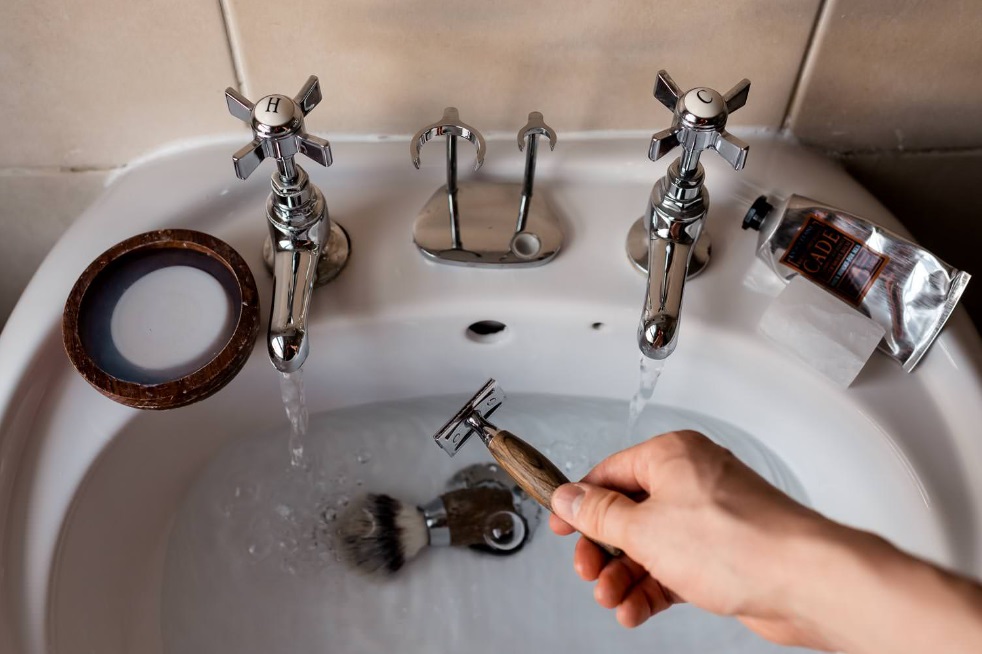
What should I do if, despite cleaning, my razor is still clogged?
Following cleaning, there are a few things you may try to try to unclog your razor if it’s still clogged:
- To clean a clogged razor and get rid of any last bits of hair from a razor and dirt that might still be wedged between the sharp razor blades, use a toothpick or a little brush. Make sure not to harm the razor blades. For 15 to 20 minutes, soak the head of the razor in a solution of warm water and white vinegar.
- Vinegar can aid in removing any tenacious buildup and freeing up any material that might be lodged in the razor blades. To break down and remove hair, skin oils, and other debris from your razor, try using a specialist cleaning solution. Pay close attention to the directions on the package.
- If the head of the razor still clogs after cleaning, think about changing the head of the razor blades or the whole thing. The razor blades may grow dull and less efficient in cutting hair over time, which may cause more clogs.
- If none of these techniques are successful, it might be time to get a new razor. For the finest shaving experience, keep your razor sterilize, clean, and well-maintained because a clogged one can be annoying to use and can also result in nicks and cuts.
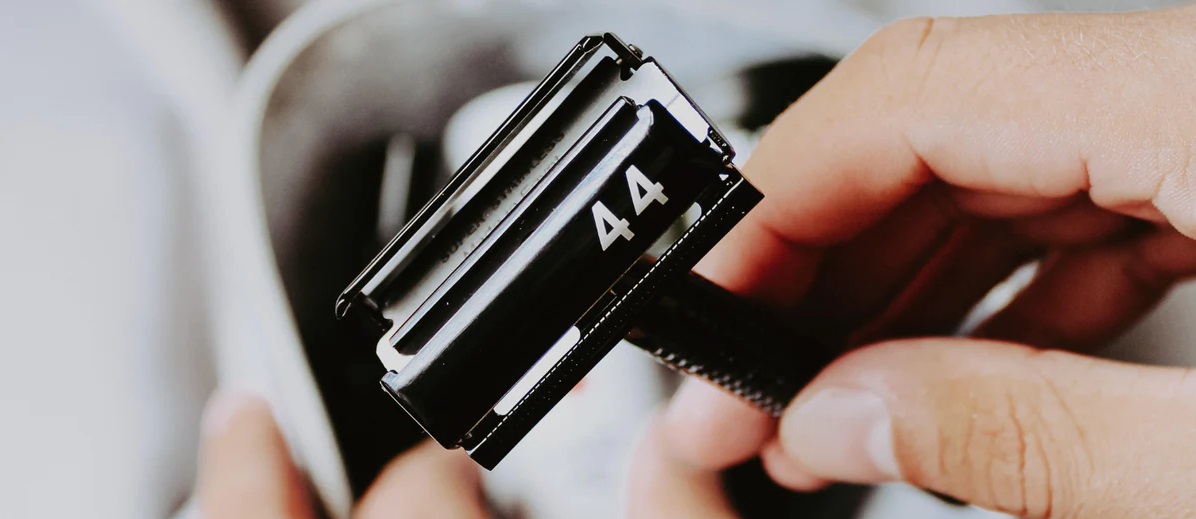
How to clean hair out of a razor step by step?
A razor’s efficacy and endurance can be maintained by regularly cleaning its hair.
The stages of clearing a razor of hair are as follows:
- The razor should be rinsed under running water to get rid of any debris and lank hair. To protect the blades, use a soft stream of water. The razor should be disassembled by detaching the handle from the blade. If you are unclear about how to do this, stick to the manufacturer’s instructions.
- Brush the razor, gently brush away any leftover hair and debris from the razor using a soft-bristled brush. By doing this, blockages can be avoided and the razor can remain sharp. To soak the razor, add a drop of dishwashing liquid to a bowl of warm water. The razor parts should be placed in the bowl and given some time to soak.
- Use a toothbrush or soft-bristled brush to scrub the razor, paying particular attention to the blades. To prevent harming the blades, be gentle. Rinse the razor under running water to get rid of any soap residue, then dry it off. Shake off any extra water, then pat the components dry with a fresh towel.
- Reassemble the razor. After all of the components have dried fully, put the razor back together by fastening the blade to the handle. By following these instructions, you may easily remove hair from your razor and prolong its life. Store loose razor blades in an enclosed case or other similar containers is the best way to store them.
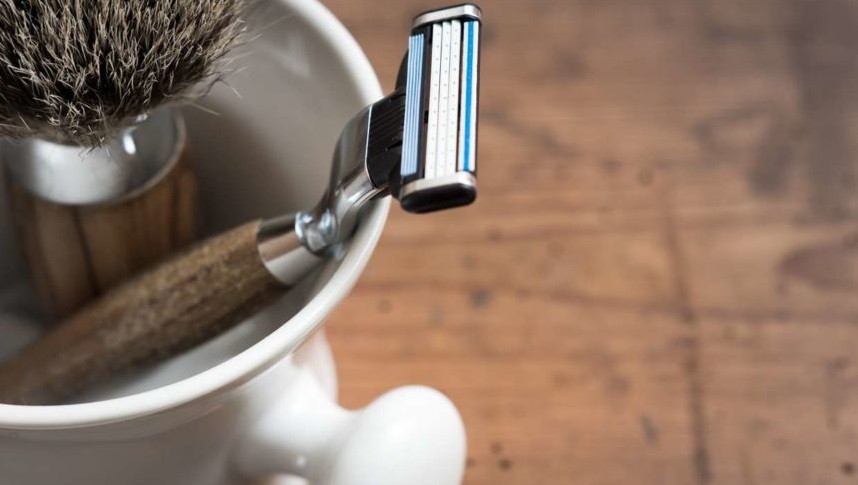
How to sterilize a razor blade correctly?
An essential part of maintaining excellent hygiene and avoiding infections and skin irritations is sterilizing your razor blade.
The steps to properly sterilize a razor blade are as follows:
- Use soap and water to properly wash the razor blade to get rid of any dirt, grease, or bacteria that might be on the surface. The blade should be carefully cleaned with clean water before being dried. In a small basin, combine equal parts of water and rubbing alcohol to create a sterilizing solution.
- In addition, there are commercially available razor sterilizing solutions and hydrogen peroxide that you can use. At least five to ten minutes should pass after dipping the razor blade into the solution. After removing the blade from the solution, thoroughly rinse it with water. With a fresh towel or by allowing it to air dry, completely dry the blade.
- It’s critical to understand that sterilizing a razor blade does not imply that it has undergone full disinfection. It’s best to routinely replace the blades and steer clear of sharing your razor with others if you want to make sure it’s thoroughly clean and secure for use.
- Additionally, it’s advisable to delay shaving until they have fully healed if you have any cuts, sores, or infections on your skin to avoid future difficulties.

FAQ
How do you deep clean a razor?
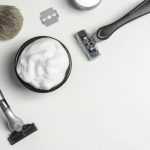
To maintain a razor functioning well and avoid the accumulation of bacteria and other debris, it should be thoroughly cleaned.
To thoroughly clean your razor, follow these instructions:
– Disassemble the razor by taking off the blades and any other removable components. Put the razor in warm water to soak for a few minutes, to do so, fill a bowl or sink with warm water. Any buildup of dirt or debris on the razor will become softer as a result.
– Brush the razor clean, to do so, scrub the razor gently with a soft-bristled brush, such as a toothbrush. Pay close attention to any locations where accumulation or debris may be more likely to occur, such as the area surrounding the blades and the razor’s crevices. Thoroughly rinse the razor under running water to get rid of any residue from the cleaning agent.
– Cleanse the razor, you can give the razor a brief soak in a solution of rubbing alcohol or hydrogen peroxide to get rid of any leftover bacteria or germs.
– Alternatively, you might use a disinfectant wipe to sterile the razor. Before reassembling and using the razor once more, thoroughly dry it with a clean cloth.
You can help guarantee that your razor is spick-and-span, hygienic, and functional by following these instructions.
What are razor burns?

A frequent skin irritant that can happen after shaving with a clogged razor is razor burn. It often manifests on the skin as a red, itchy rash that may also have tiny bumps or pimples. The friction between the blade and the skin, which can result in razor burn, can irritate and inflame the skin.
Razor burn symptoms include, among others:
– Inflammation and redness when touched, the affected area may feel tender or painful and seem red or inflamed.
– This burn can result in dryness and peeling of the skin, which can make itchy and irritated skin even worse.
Below are some suggestions to prevent burns:
– To get rid of dead skin cells and avoid ingrown hairs, exfoliate before shaving. To guarantee a clean, efficient shave, use a razor with sharp blades and replace them frequently. To lessen irritation and lower the chance of ingrown hairs, shave in the direction of hair development. To moisturize the skin and lessen friction during shaving, use cream or gel.
– To prevent irritability, take your time and apply moderate strokes. After shaving, rinse with cool water to calm the skin and lessen irritation. To calm the skin and lower the likelihood of dryness and irritation, apply a moisturizer or aftershave lotion.
In addition, if a burn does occur, over-the-counter remedies like aloe vera gel or hydrocortisone cream can assist to soothe the skin and prevent swelling.
How to choose a shaving razor correctly?
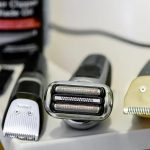
To get a close, comfortable shave, picking the shaving razor correctly is crucial. When selecting a razor, keep the following things in mind:
– Skin type. When selecting a razor, take into account your skin type. Choose a razor with fewer blades and a gentler cutting action if you have sensitive skin to lessen stinging.
– Hair kind. Your choice of razor may also be influenced by your hair type. A razor with numerous blades may be necessary if you have coarse or thick hair to provide an efficient shave.
– Razor type. There are various kinds of razors, including straight, safety, disposable, and cartridge razors. Choose a type based on your needs and tastes after weighing the advantages and disadvantages of each. The effectiveness and comfort of the shave can be affected by the quality of the blades. Choose blades that can easily slide over the skin and are of the highest quality to avoid the growth of ingrown hairs.
By taking into account these elements, you may select a razor that is ideal for your skin and hair type, resulting in a smooth and efficient shave. Don’t be scared to experiment with various razors to find the one that suits you the best.
Why does so much hair get stuck in my razor?
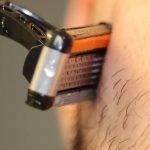
For many people, shaving is a common and practical procedure for hair removal to get a smooth clean shave, but it also has pros and cons. The following are some of the main benefits and drawbacks of shaving to eliminate hair:
– Advantages. Razors can be used at home to get a smooth shave result without the help of a professional and are simple to use. Razors are reasonably priced in comparison to other hair removal techniques like waxing or laser hair removal. Razors are readily available at drugstores and other retail establishments, making it simple to buy and replace them. You have more control using a disposable razor over the regions to get a smooth shave and how much hair you remove.
– Disadvantages. The disposable razor burns and ingrown hair can occur after shaving, especially if you have sensitive skin. After shaving, hair quickly comes back or ingrown hairs appear, so you might need to shave frequently to keep your skin smooth. Razors are sharp instruments that, if not used carefully, can inflict cuts and nicks.
If minor skin cuts from shaving are not thoroughly cleaned and disinfected, the risk of infection and skin irritation will grow. If you shave with a dirty razor, you run the risk of getting razor bumps, and other nasty skin infections. A frequent skin irritant that can happen after shaving is razor burn.
It often manifests on the skin as a red, itchy rash that may also have tiny bumps or pimples. Disposable razors and razor blades produce trash that could be damaging to the environment.
Shaving can be a quick and cost-effective hair removal method, but it’s critical to be aware of the hazards and take the necessary steps to reduce irritability, infection, and other issues.
How do you clean a razor that you used for pubes?

To guarantee that the razor is completely cleaned and disinfected, there are a few extra measures you may want to follow when cleaning a razor that has been used for pubic hair. To sterilize a razor you use for the pubes, you can follow this instruction:
– Disassemble the razor by taking off the blades and any other removable components. Put the razor in warm water to soak for a few minutes, fill a bowl or sink with warm water. Any buildup of dirt or debris on the razor will become softer as a result. Brush the razor clean, scrub the razor gently with a soft-bristled brush, such as a toothbrush.
– Pay close attention to any locations where accumulation or debris may be more likely to occur, such as the area surrounding the blades and the razor’s crevices. Cleanse the razor, you can give the razor a brief soak in a solution of rubbing alcohol or hydrogen peroxide to get rid of any bacteria or germs that could be present.
– You might use a disinfectant wipe to sterile the razor. Thoroughly rinse the razor under running water to get rid of any residue from the cleaning agent. Before reassembling and using the razor once more, thoroughly dry it with a clean cloth.
It’s crucial to remember that you should take additional care to clean the razor to stop the spread of bacteria if you have any wounds or nicks on your skin from shaving your pubic hair.
Additionally, to prevent any potential contamination with other parts of your body, you might want to think about using a different razor or attachment when shaving your pubic hair.
How do you disinfect a razor after shaving?
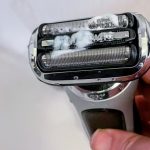
After shaving, it’s crucial to disinfect your razor to help stop the growth of bacteria and other microorganisms that might irritate or infect the skin.
Following shaving, you can follow these procedures to clean your razor:
– After shaving, give the razor a good rinse under running water to get rid of any remaining shaving cream, hair, or dirt.
– Rinse the razor with rubbing alcohol or hydrogen peroxide and soak it for a few minutes in a small bowl or cup filled with the substance. Any bacteria or germs that may be on the razor will be killed by doing this.
– After soaking, give the razor another thorough rinse under running water to get rid of any residual peroxide or alcohol. Before putting the razor away, carefully dry it with a clean cloth.
– To further lower the danger of bacterial or viral contamination, it’s vital to remember that while sanitizing your razor can help to reduce the chance of infection, it’s also crucial to use a clean, sharp blade and avoid sharing your razor with others.
– It’s critical to take extra precautions to thoroughly clean the razor from stuck hair if you have any scrapes or nicks on your skin while shaving to stop the spread of bacteria.
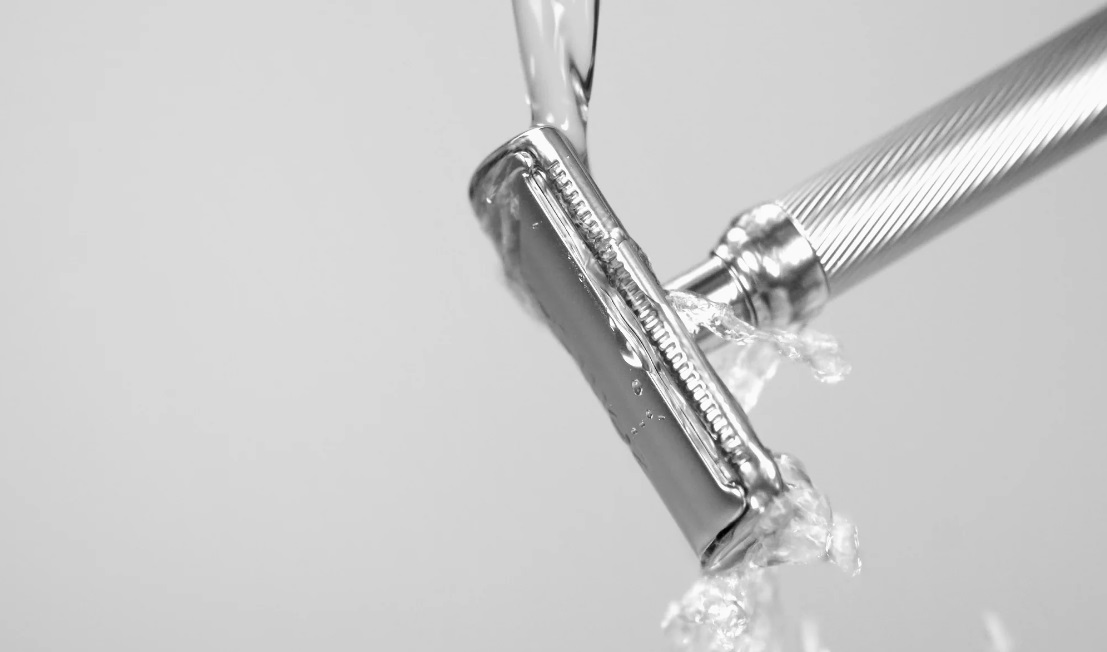
Conclusion
To maintain a hygienic and clean razor-shaving experience, cleaning hair from a razor is crucial. When hair and debris build up on a razor, it can compromise performance, aggravate skin, and potentially spread illness. You can make sure that your razor stays clean and germ-free by cleaning and disinfecting it according to the right procedures.
It’s crucial to take into account aspects like the type of razor, the state of the blades, and the shaving technique employed when cleaning a razor. You may effectively clean out hair and debris from your razor and avoid any potential difficulties by putting safety, hygiene, and appropriate disinfection first.
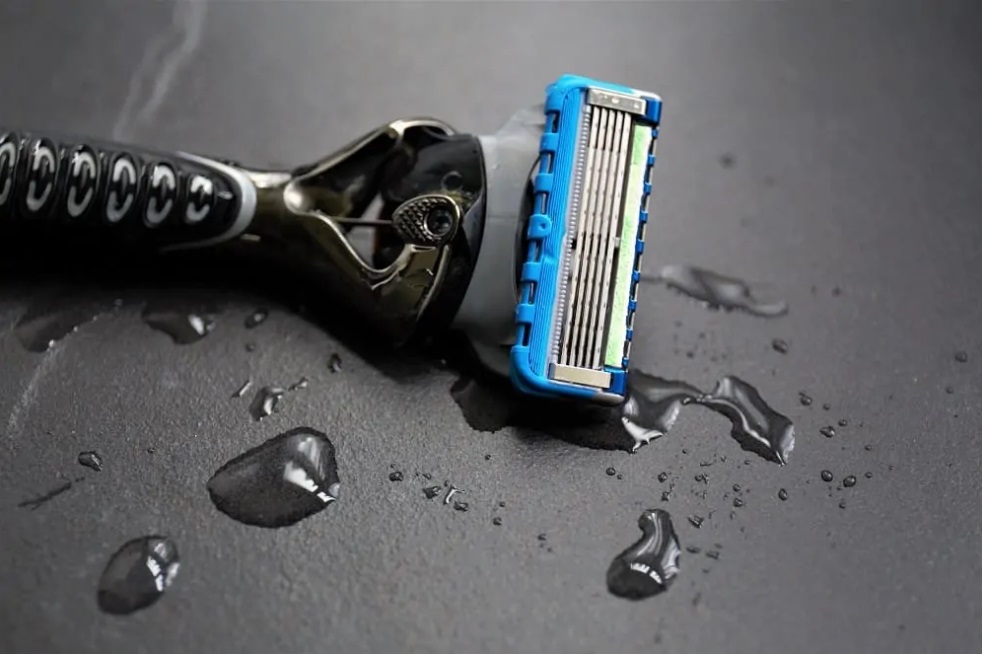
You can ensure a comfortable shave and efficient shaving experience, promote excellent hygiene, and lower the risk of infection or discomfort by taking the time to clean a clogged razor after each use. You can maintain a clean, effective razor for a comfortable shave by keeping these suggestions in mind.
Are you interested in reading more on how to clean hair out of a razor? We suggest you to read another article. All you need to do is just follow the link.

